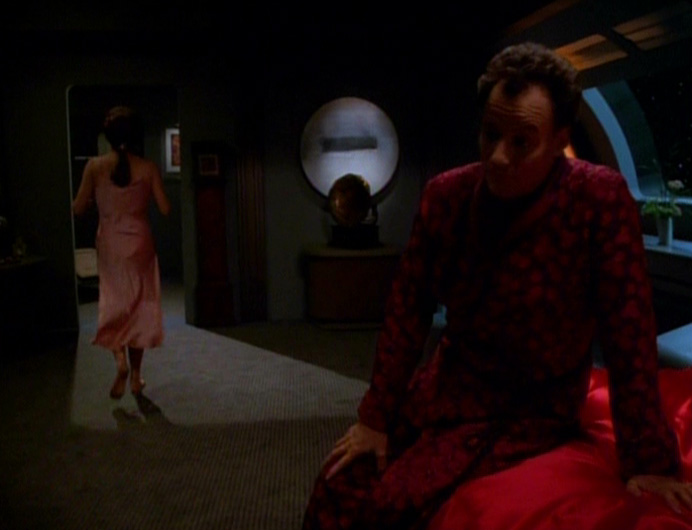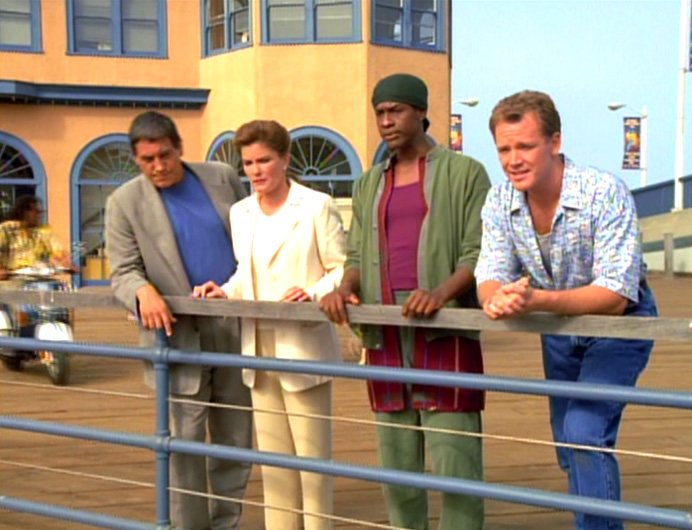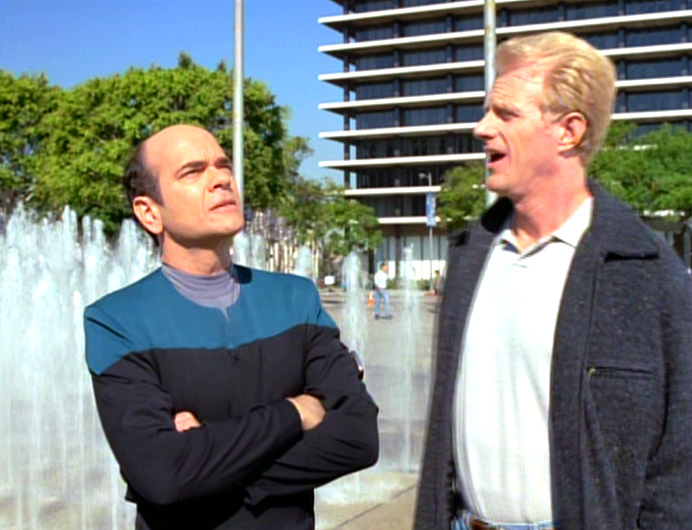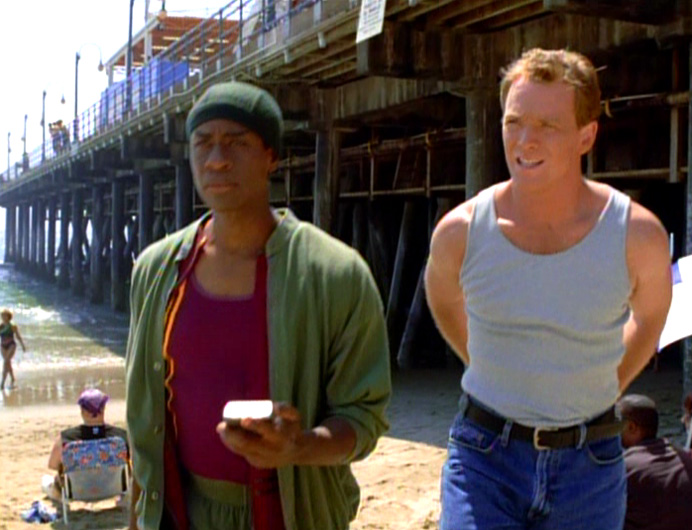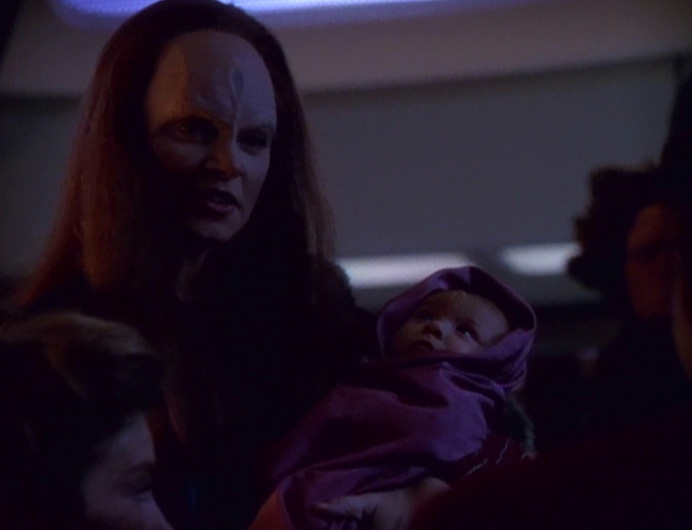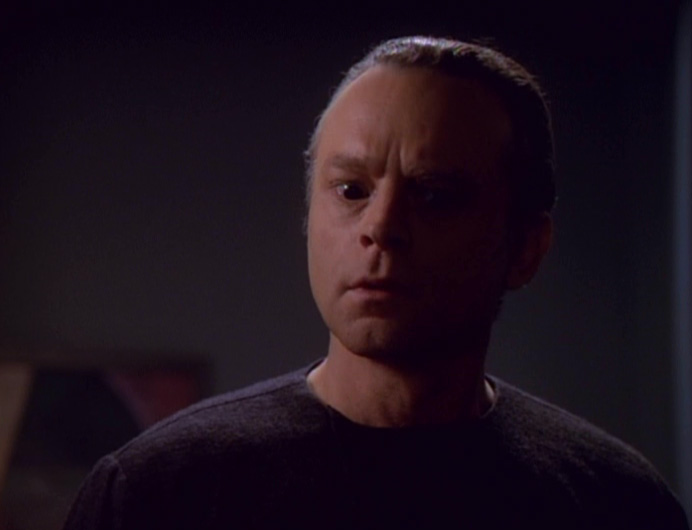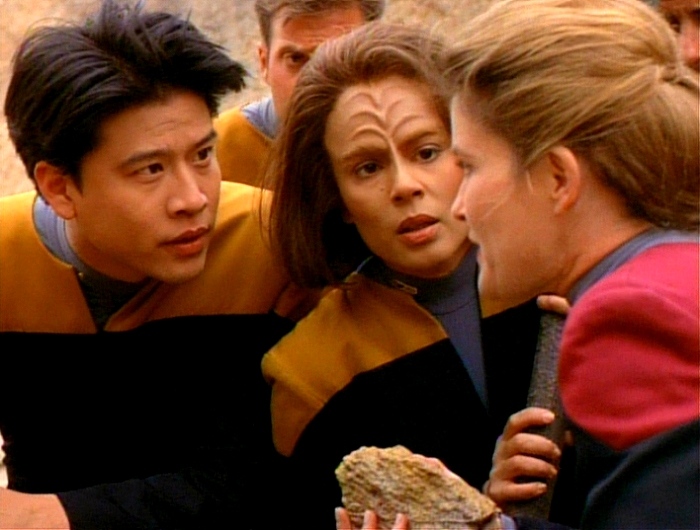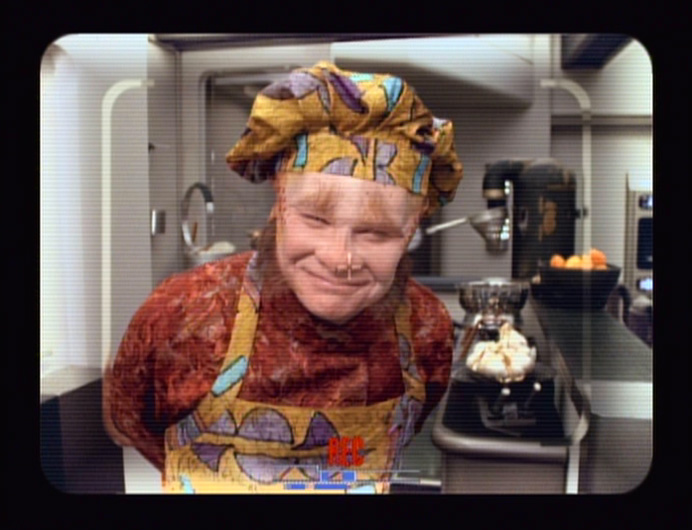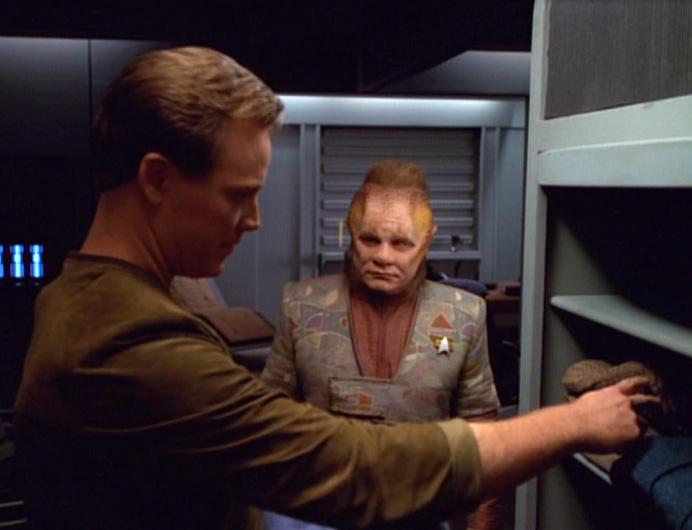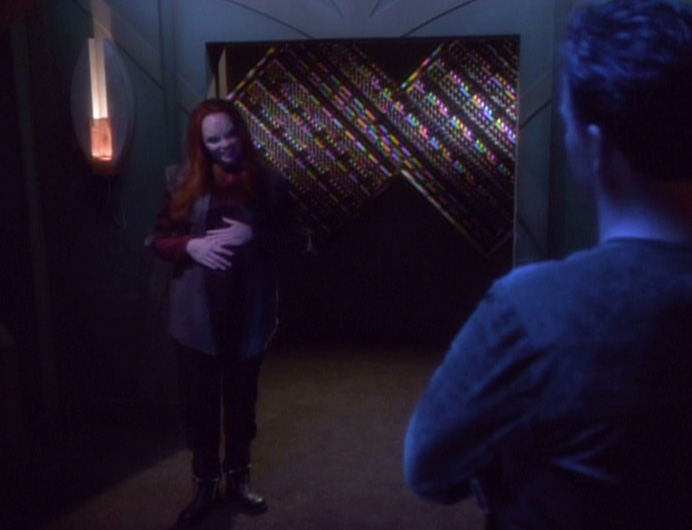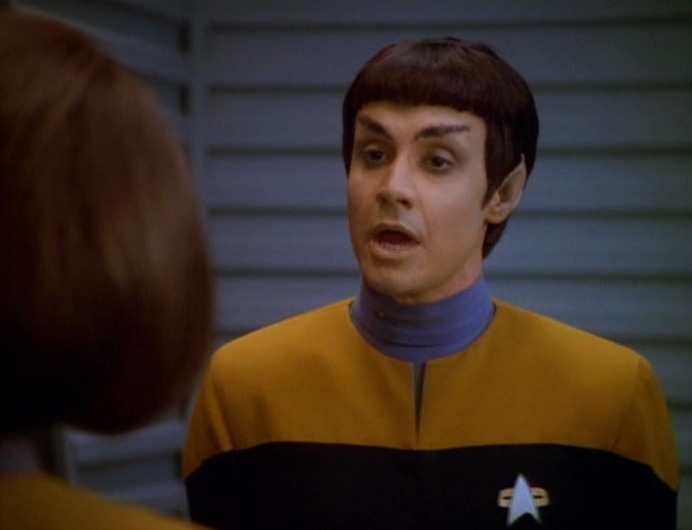
Voyager finds an apparently uninhabited planet with some valuable resources and Torres prepares to extract them. Before she leaves on an away mission, Ensign Vorik (Alexander Enberg), a Vulcan we’ve seen in engineering a time or two, requests to mate with her, and the two fight after she rebuffs him. Turns out he’s going through the Vulcan 7-year mating itch Spock went through in “Amok Time”. Torres, Paris and Neelix head to the planet and Torres begins acting weird and bites Paris on the cheek. Somehow, Vorik’s condition has been imprinted on Torres, and now she has Paris in her half-Klingon sights. Meanwhile, the away team eventually meets aliens who still live on the planet after mastering a way to hide themselves from unnamed invaders. With Torres’s condition deteriorating, she and Paris are about to get busy when Vorik leaves the ship and demands Torres mate with him. At Tuvok’s suggestion, Vorik and Torres fight in ritual combat, extinguishing the blood fever (which is how Spock got over his thing back in the day). Back on the ship, Paris and Torres talk about what happened, with some hints that a relationship between the two might be around the corner. But the episode ends with Chakotay showing Janeway the skeletal remains of a Borg (!) on the surface — apparently the planet’s invaders and an indication Voyager is nearing or entering Borg space.
Why it’s important
The main plot to this episode isn’t all that important from a bigger-picture perspective. It is a nice bit of continuity with Trek as a whole and it does further the Paris/Torres relationship — which would become one of the show’s best nods to Voyager’s premise of an isolated crew.
But, really, the show’s final minute is the important thing here. Discovering that the Borg are close is a huge domino and would go on to be part of Voyager’s lasting legacy — with the debut of Seven of Nine in the fourth season and the ship’s repeated encounters with the Borg up through the series finale.
It was a tough call whether to review “Blood Fever” or the subsequent episode “Unity” — in which Chakotay encounters a group of freed drones who want to return to a lesser version of the collective. But this episode is the first time we see the Borg on Voyager, so it got the nod. And when Voyager encounters actual, real, live Borg, we’ll be on it.

What doesn’t hold up
It’s a little hard to believe that Vorik — in his messed-up state — would have been able to disable Voyager’s transporters, communications and shuttles before heading to the planet. It’s too bad the creators didn’t just chalk up the lack of help from Voyager — which is key, as it means letting Torres and Vorik fight is the best available option — to interference on the planet. But whatever.
I do wonder about Tuvok’s thinking in suggesting that Torres and Vorik fight. While it’s true that combat was preferable to the two of them dying from the fever, why not just just stun them or give them both nerve pinches and wait until Voyager fixes things? It’s awfully convenient that both Torres and Vorik end up being done with the blood fever at EXACTLY the same moment.
Big picture, this is pretty cartoony, even for Voyager. The cast pulls it off as well as could be expected, I guess (Roxanne Dawson and Robert Duncan-McNeil bring their A games). And I actually really liked the use of Chakotay in talking down the aliens on the planet. But the idea that Vorik’s condition could be transmitted is, well, goofy.
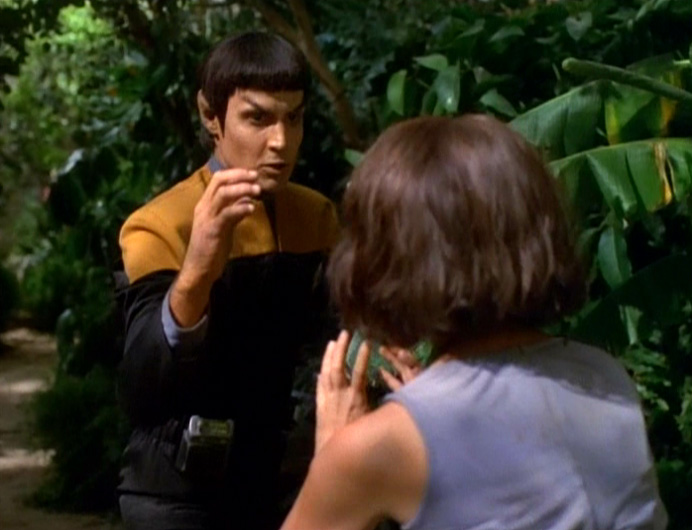
Final thoughts
I give Voyager a lot of crap for lack of continuity. But it’s nice that we don’t meet Vorik for the first time in this episode and that he doesn’t go away after it. Although he mostly shows up in the third and fourth seasons, we see Vorik again in the seventh season. So, I’ll give the creators a mild pat on the back on this one. Plus, Enberg can do the Vulcan thing pretty well.
It is interesting that Voyager — much like DS9 in the middle years — was seeking to reinvent itself. After a second season that wasn’t well received, Voyager brought back one of Trek’s best baddies in the Borg, who were recurring villains the rest of the series. In a way, that decision made Voyager even more “TNG in the Delta Quadrant.” But given the bad execution during the Kazon years, it might have been the best choice.
Coming next week …
The Borg. For reals, this time.


